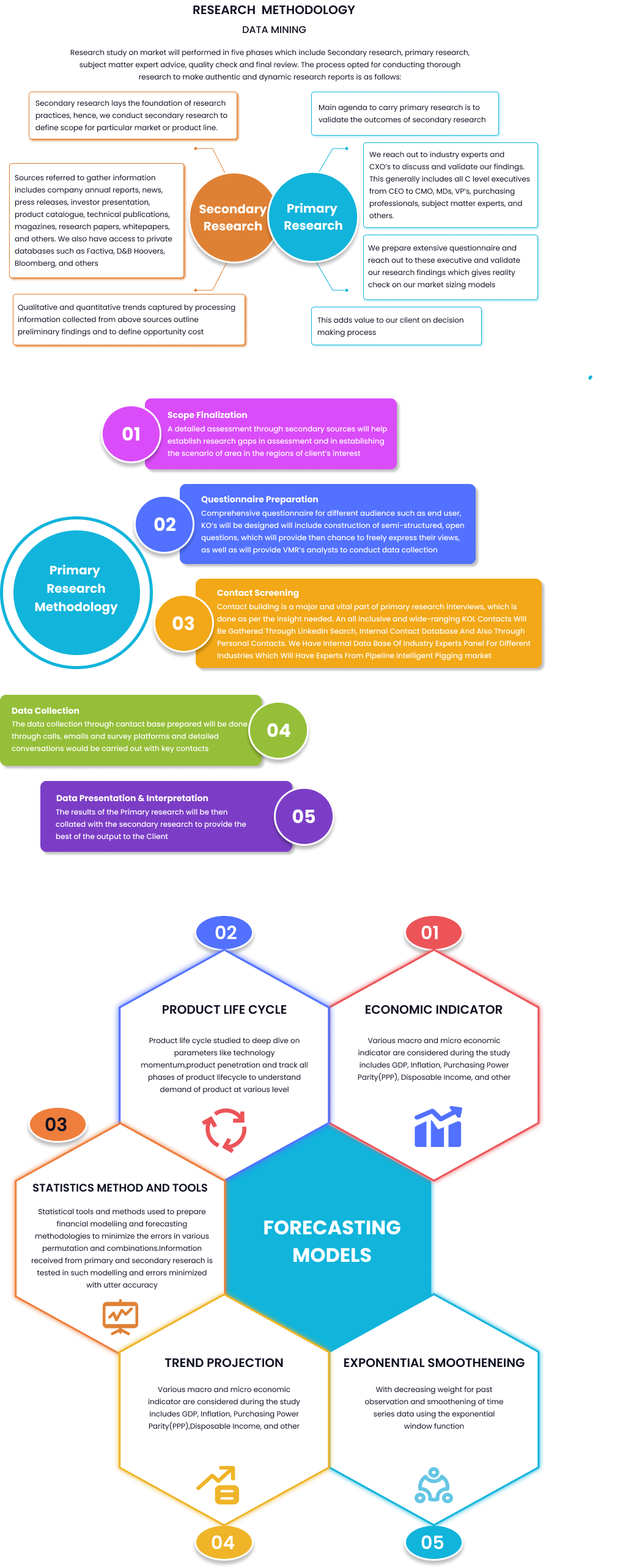
Global Seawater Electrolysis System Market Size By Type (Brackish Water, Brine), By Application (Municipal, Marine), By Region, And Segment Forecasts, 2023 to 2032
Report Id: 42442 | Published Date: Jan 2025 | No. of Pages: | Base Year for Estimate: Jan 2025 | Format:
The Global Seawater Electrolysis System
Market is expected to witness significant growth between 2023 and 2031, driven
by increasing demand for clean hydrogen production and desalination. In 2023,
the market was valued at USD 4.2 billion and is projected to surpass USD 7.6
billion by 2031, growing at a CAGR of 6.8%. The use of seawater electrolysis
systems is expanding due to their potential to produce hydrogen without relying
on freshwater resources, an increasingly critical factor in regions facing
water scarcity. Key industries, including energy, chemical, and desalination
plants, are leading adopters of this technology to meet sustainability goals.
Drivers:
Increasing Demand for Green Hydrogen: As
industries seek sustainable alternatives to fossil fuels, seawater electrolysis
offers a viable solution for large-scale hydrogen production. Governments and
corporations are investing in green hydrogen to decarbonize energy systems,
driving demand for seawater electrolysis systems.
Water Scarcity Concerns: Many regions face
severe water shortages, making seawater electrolysis a sustainable method for
hydrogen production and desalination, reducing reliance on freshwater sources.
Technological Advancements: Continuous
innovations in electrolysis technologies, such as improvements in efficiency
and cost reduction, are boosting adoption across various industries.
Restraints:
High Capital Costs: The initial investment
required for installing seawater electrolysis systems is substantial,
potentially limiting adoption among small and medium-sized enterprises (SMEs).
Energy-Intensive Process: Electrolysis is
an energy-intensive process, and its economic feasibility often depends on
access to affordable renewable energy sources.
Opportunity:
Integration with Renewable Energy: Seawater
electrolysis systems integrated with solar and wind energy present significant
growth opportunities by enabling sustainable hydrogen production.
Expanding Market in Emerging Economies:
Rapid industrialization in regions such as Asia-Pacific and the Middle East is
fostering investments in seawater electrolysis for clean energy production and
desalination.
Market
by System Type Insights:
In 2023, the alkaline electrolysis segment
dominated the market, accounting for the largest market share due to its lower
operational costs and proven reliability. However, the proton exchange membrane
(PEM) electrolysis segment is expected to witness the fastest growth due to its
high efficiency and adaptability for integration with renewable energy sources.
Market
by End-use Insights:
The energy sector emerged as the largest
end-use industry, driven by the demand for green hydrogen in renewable energy
projects and industrial applications. The desalination segment is also growing
rapidly, as countries with limited freshwater resources invest in advanced
desalination technologies that include seawater electrolysis.
Market
by Regional Insights:
The Asia-Pacific region led the market in
2023, attributed to significant investments in hydrogen energy infrastructure
and water desalination projects. Europe and the Middle East are also key
regions witnessing rapid adoption, driven by government policies promoting
clean energy and sustainable water management.
Competitive
Scenario:
Key players in the global seawater
electrolysis system market include Siemens AG, ThyssenKrupp, NEL Hydrogen,
Sunfire GmbH, and Air Liquide. These companies are focusing on strategic
partnerships, technological innovations, and expansion into emerging markets to
strengthen their market position.
Scope
of Work – Global Seawater Electrolysis System Market
|
Report
Metric |
Details |
|
Market Size (2023) |
USD 4.2 billion |
|
Projected Market Size (2031) |
USD 7.6 billion |
|
CAGR (2023-2031) |
6.8% |
|
Key Segments by System Type |
Alkaline Electrolysis, PEM Electrolysis |
|
Key Segments by End-Use |
Energy, Desalination, Chemicals |
|
Leading Region |
Asia-Pacific |
|
Key Players |
Siemens AG, ThyssenKrupp, NEL Hydrogen,
Sunfire GmbH, Air Liquide |
|
Growth Drivers |
Demand for green hydrogen, water
scarcity, technological advancements |
|
Opportunities |
Integration with renewable energy,
expanding markets in Asia-Pacific and the Middle East |
Key
Market Developments:
In 2023, Siemens AG announced the expansion
of its electrolysis system portfolio, focusing on green hydrogen production for
energy storage applications.
In 2024, NEL Hydrogen launched a new series
of PEM electrolysis systems designed for large-scale hydrogen production in
renewable energy projects.
In 2025, Air Liquide partnered with several
Middle Eastern governments to implement seawater electrolysis solutions for
both hydrogen production and desalination.
FAQs
What is the current market size of the
Global Seawater Electrolysis System Market?
The market size was valued at USD 4.2
billion in 2023.
What is the major growth driver of the
Global Seawater Electrolysis System Market?
The demand for green hydrogen and the need
for sustainable water management solutions are the primary growth drivers.
Which is the largest region during the
forecast period in the Global Seawater Electrolysis System Market?
Asia-Pacific is expected to lead the market
due to significant investments in clean energy and desalination infrastructure.
Which segment accounted for the largest
market share in the Global Seawater Electrolysis System Market?
The alkaline electrolysis segment held the
largest market share in 2023.
Who are the key market players in the
Global Seawater Electrolysis System Market?
Key players include Siemens AG,
ThyssenKrupp, NEL Hydrogen, Sunfire GmbH, and Air Liquide.

Speak with an analyst to get exclusive insights tailored to your needs

